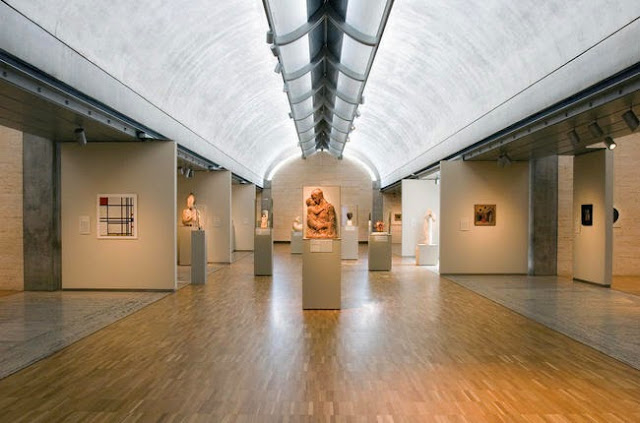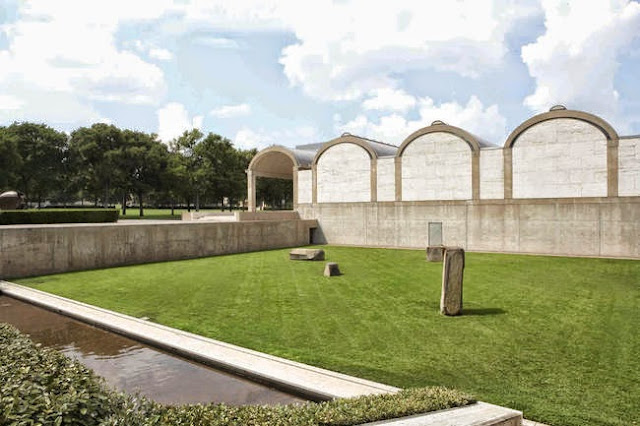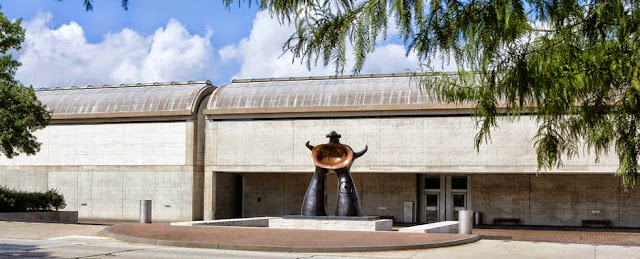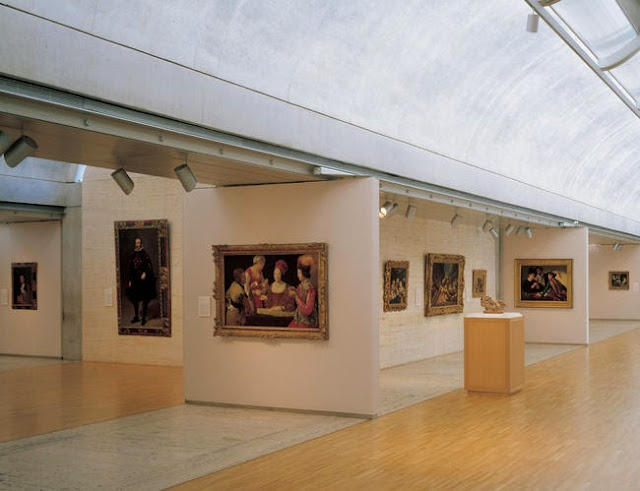The Kimbell Art Museum’s original building, designed by Louis I. Kahn and opened to the public for the first time in 1972, has become a mecca of modern architecture in Fort Worth (Texas). It is especially noted for the wash of silvery natural light across its vaulted gallery ceilings. It hosts an art collection as well as traveling art exhibitions, educational programs and an extensive research library. Its initial artwork came from the private collection of Kay and Velma Kimbell, who also provided funds for a new building to house it.
.jpg)
The Board of Directors of the Kimbell Art Foundation commissioned Louis I. Kahn as the Museum’s architect in 1966. Working closely with the Kimbell's first director, Richard F. (Ric) Brown, who enthusiastically supported his appointment, Kahn designed a building in which “light is the theme.” Natural light enters through narrow plexiglass skylights along the top of cycloid barrel vaults and is diffused by wing-shaped pierced-aluminum reflectors that hang below, giving a silvery gleam to the smooth concrete of the vault surfaces and providing a perfect, subtly fluctuating illumination for the works of art.
.jpg)
The main (west) facade of the building consists of three 100-foot bays, each fronted by an open, barrel-vaulted portico, with the central, entrance bay recessed and glazed. The porticos express on the exterior the light-filled vaulted spaces that are the defining feature of the interior, which are five deep behind each of the side porticos and three deep behind the central one. Additionally, three courtyards punctuate the interior space. Though thoroughly modern in its lack of ornament or revivalist detail, the building suggests the grand arches and vaults of Roman architecture, a source of inspiration that Kahn himself acknowledged. The principal materials are concrete, travertine, and white oak.

.jpg)

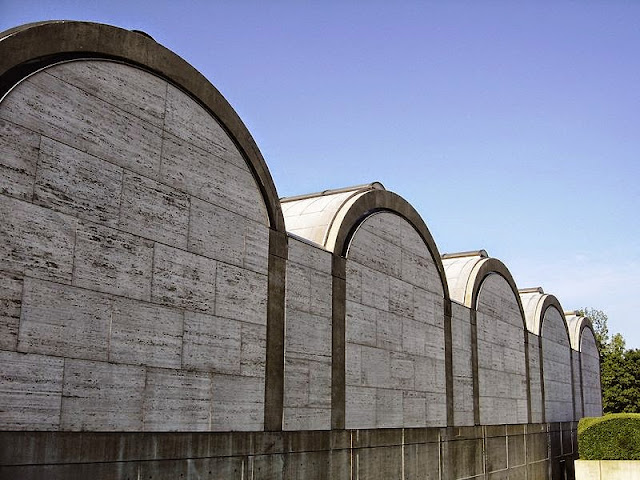



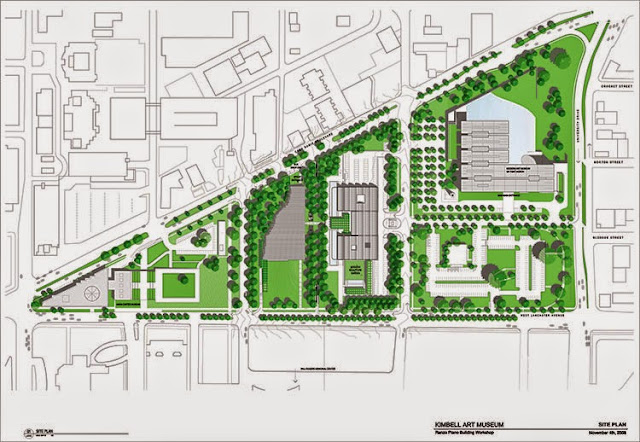

.jpg)
.jpg)
.jpg)
.jpg)
.jpg)
.jpg)
.jpg)

